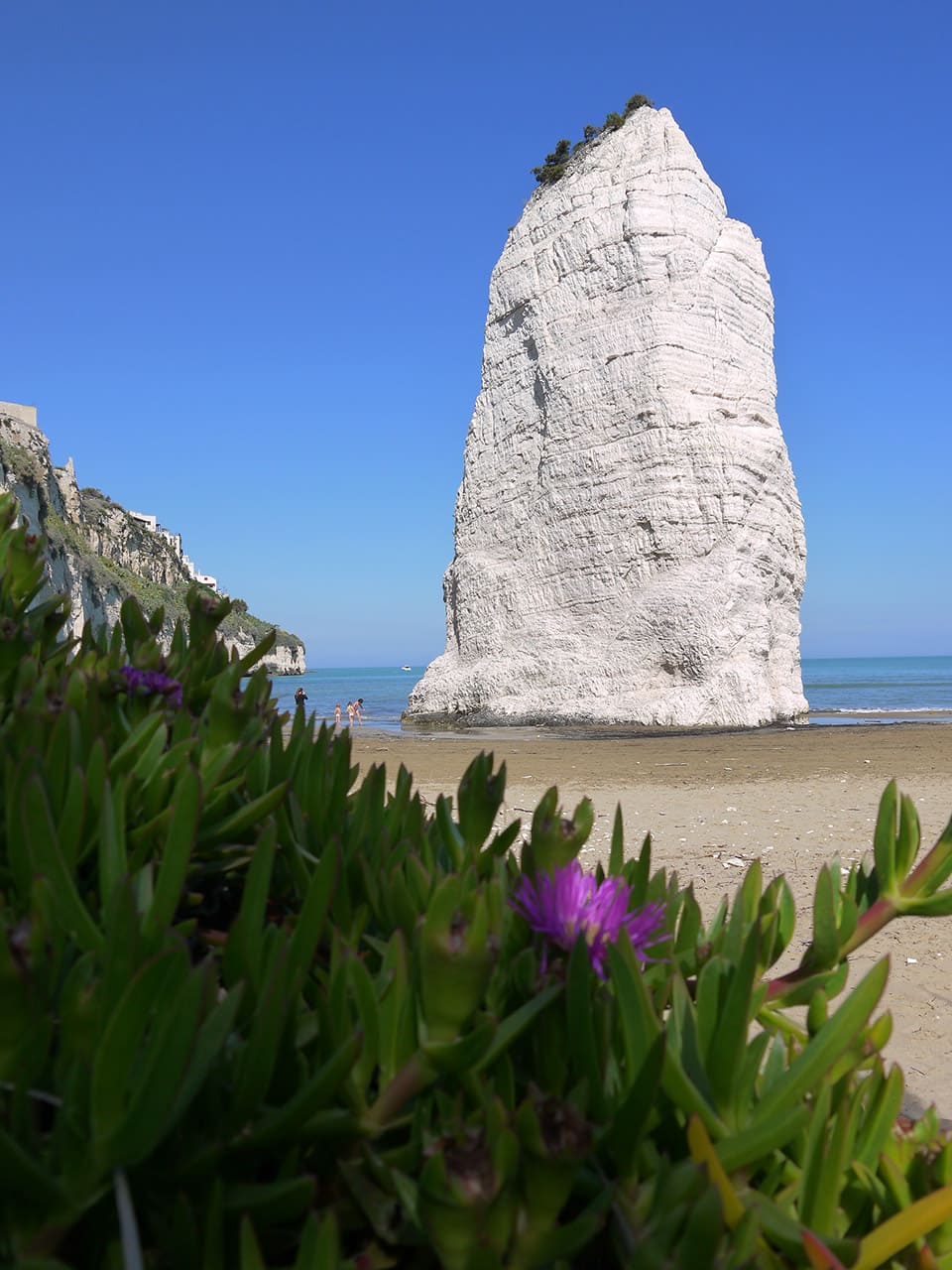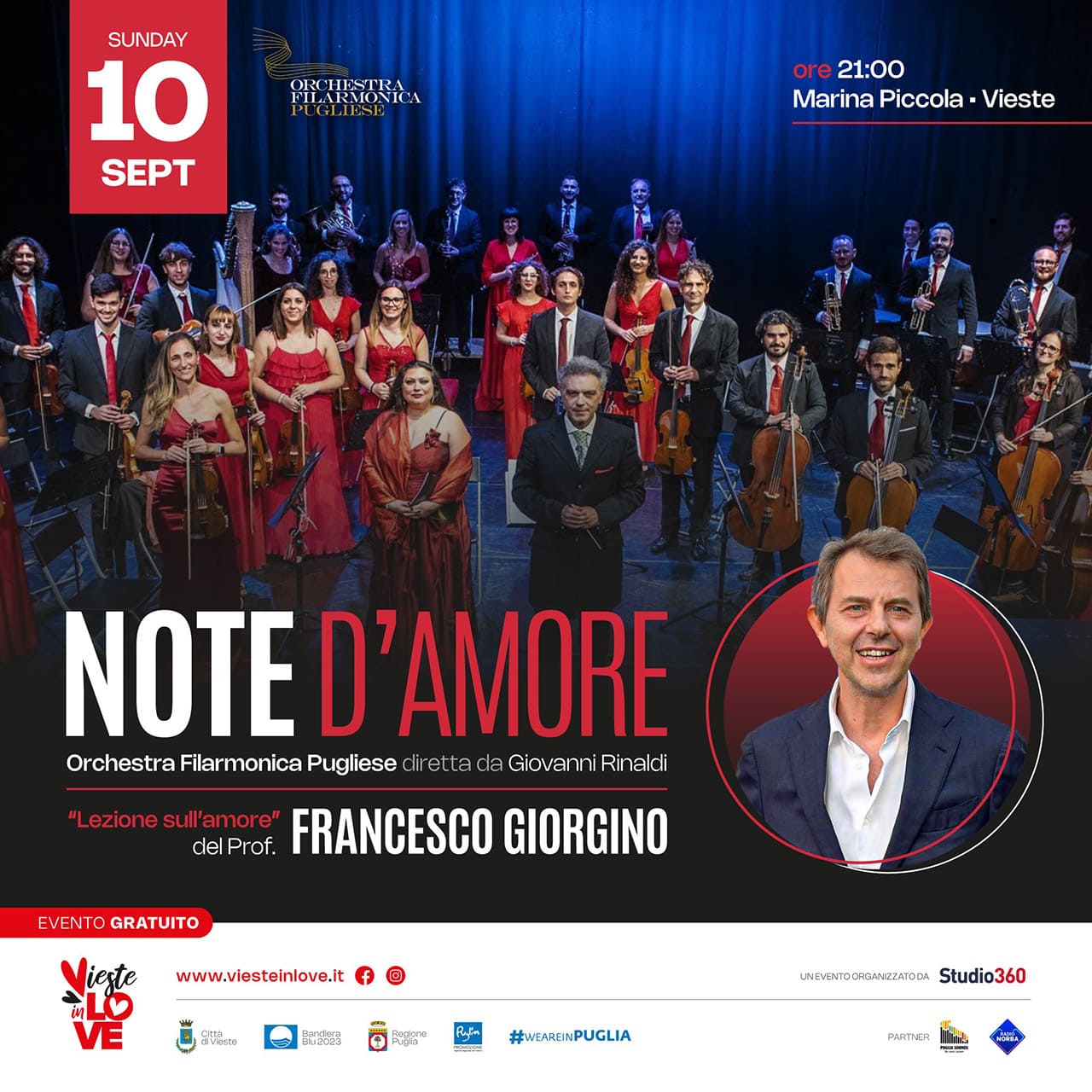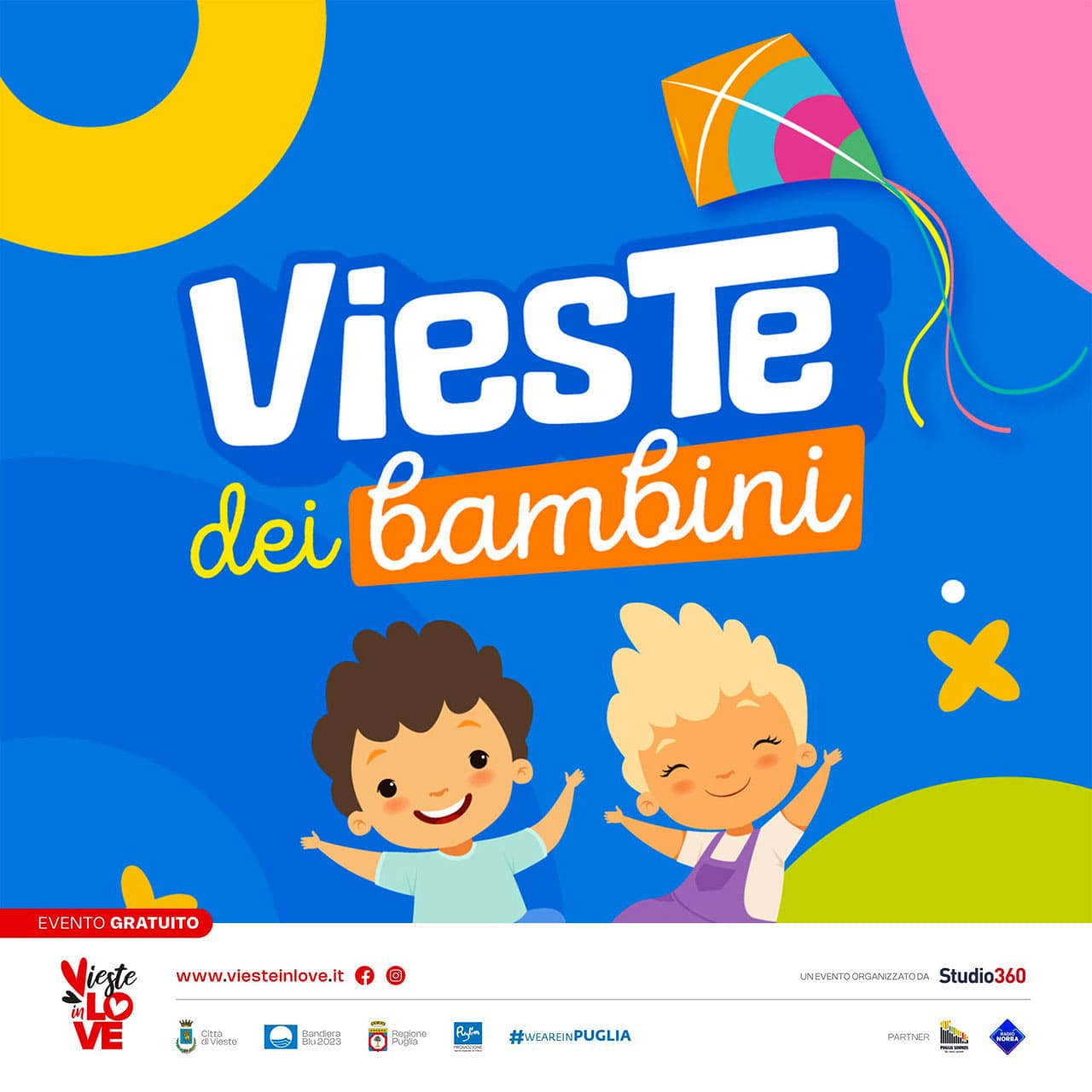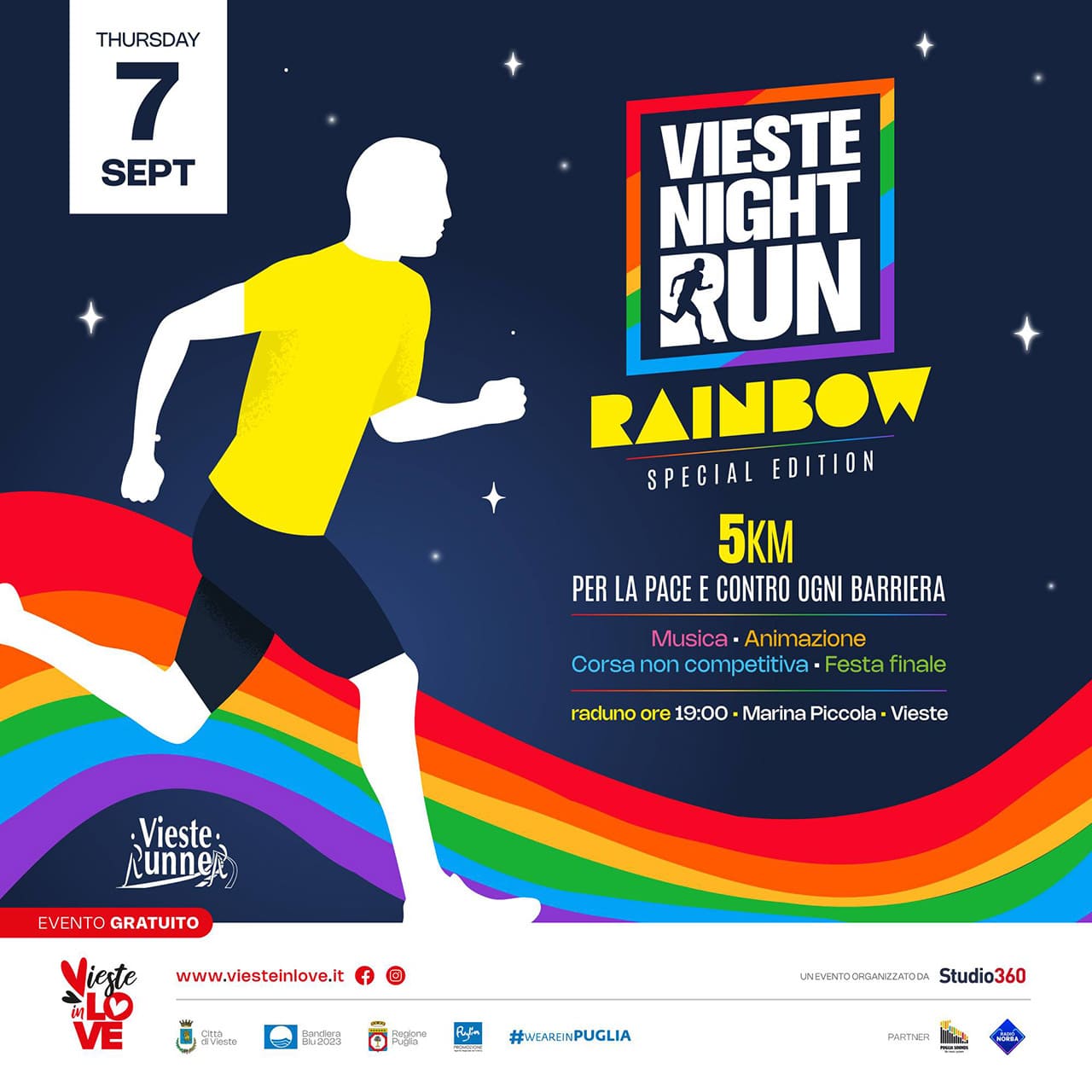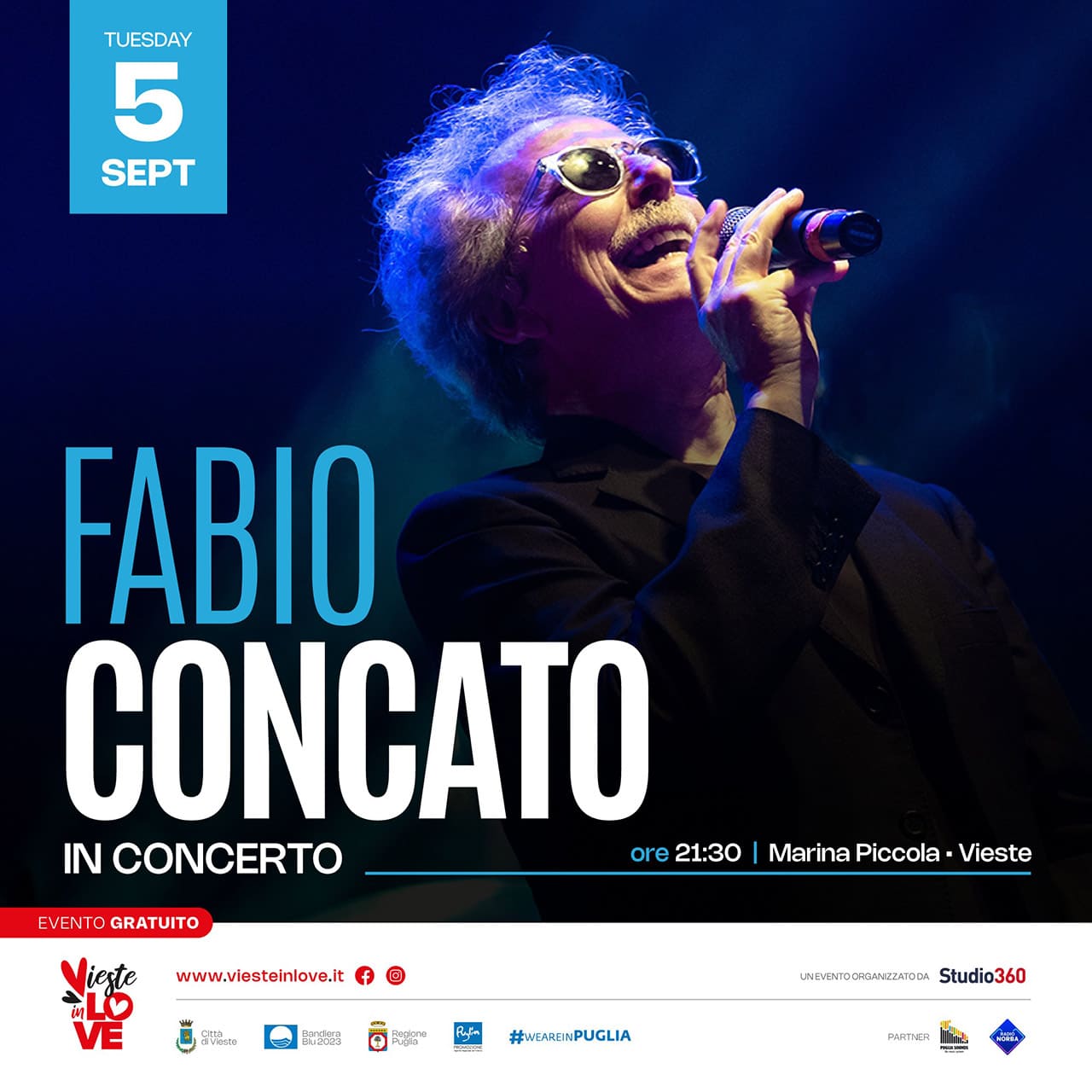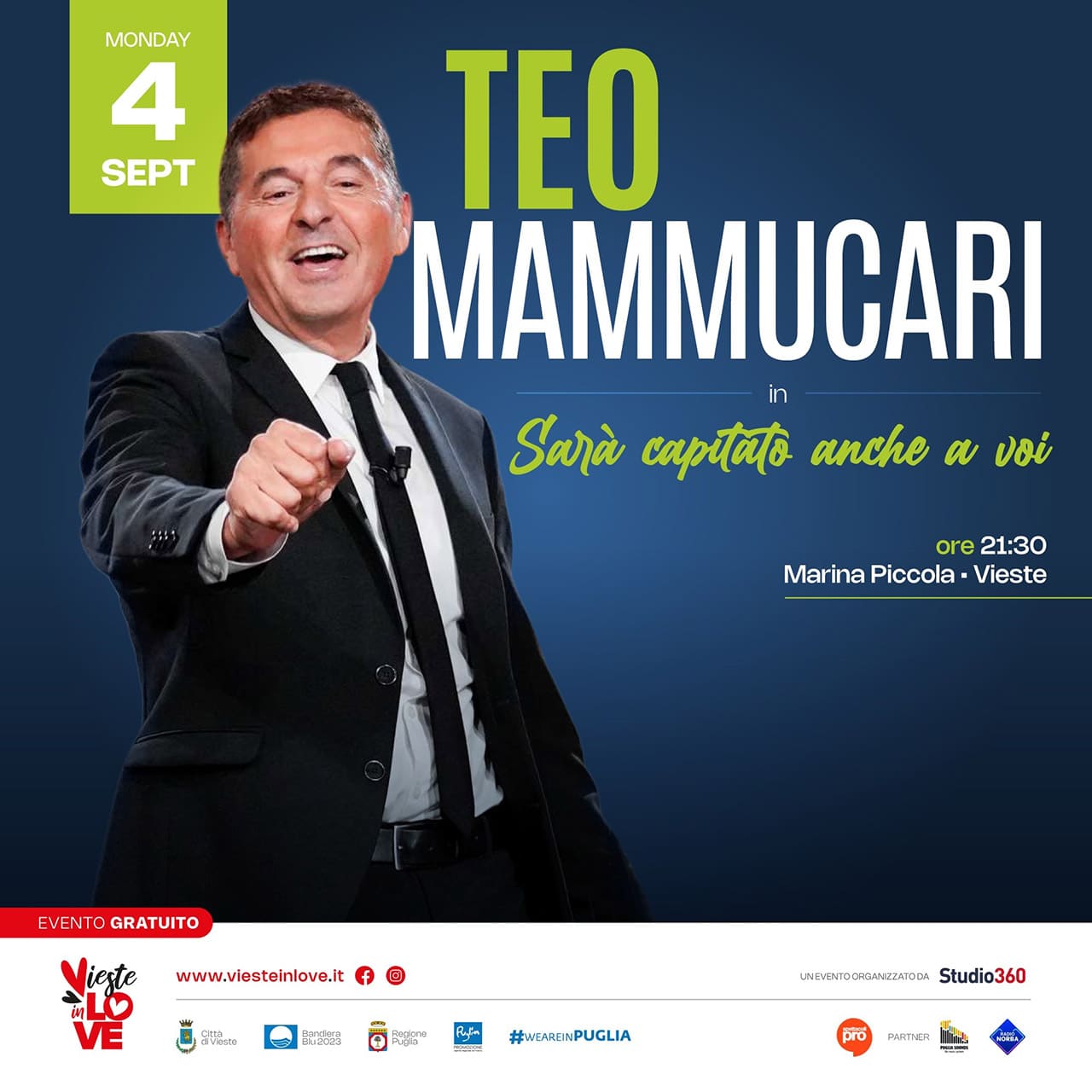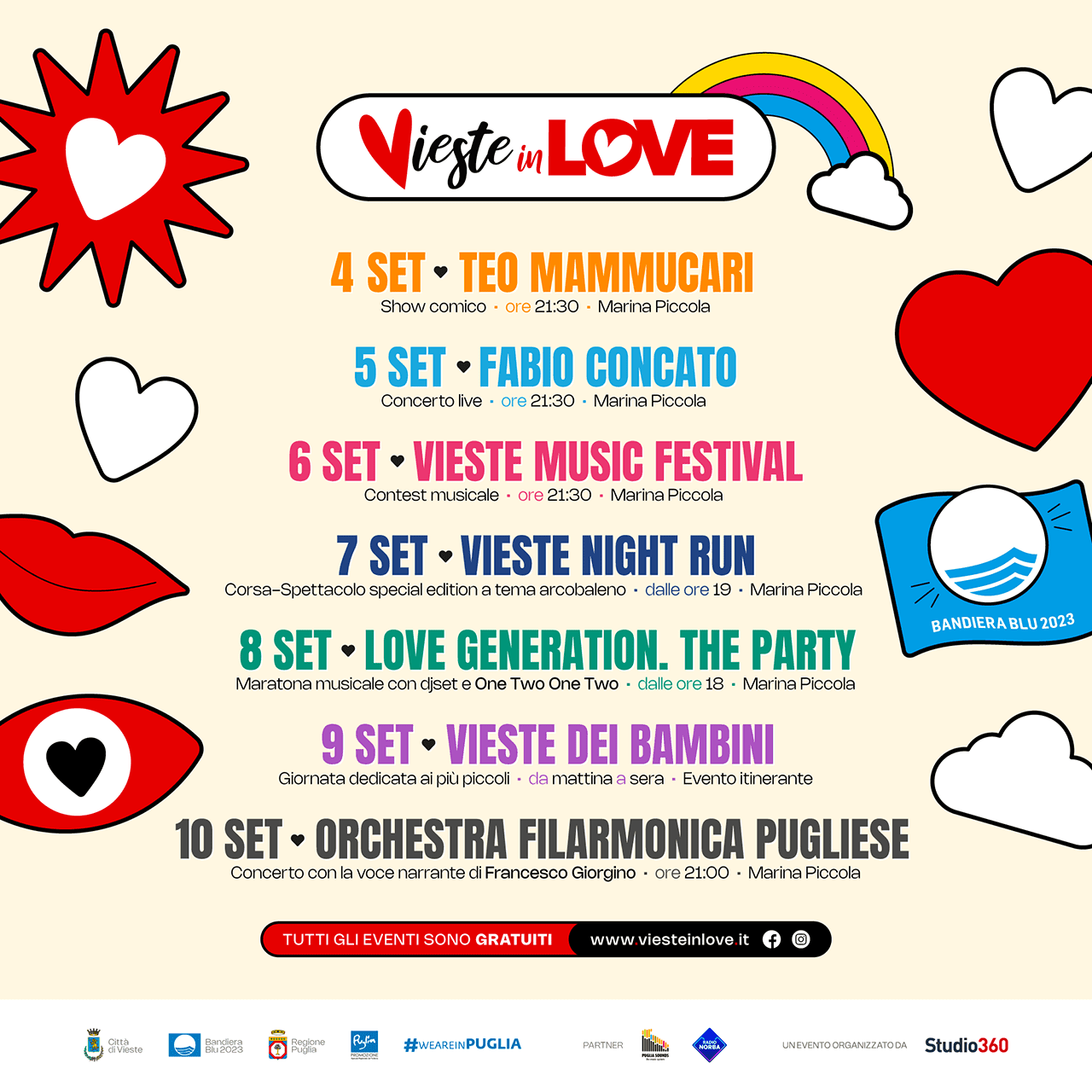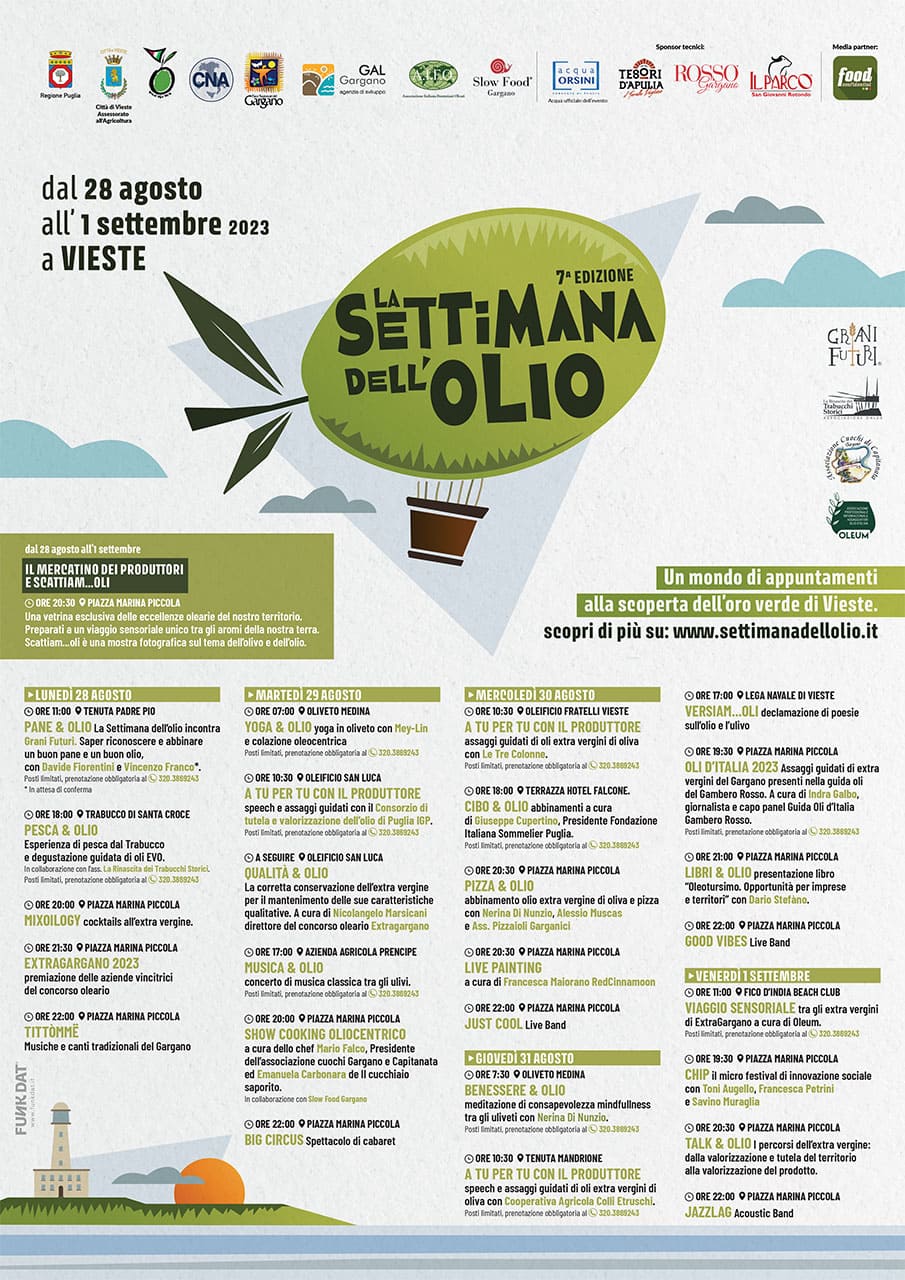Questo grande faraglione di forma pinnacolare nacque circa 100 milioni di anni fa quando organismi marini, abitanti dell’antico Oceano di Tetide, deposti e solidificati nell’arco di migliaia di anni formarono la grande massa di calcare che oggi si osserva. Il Pizzomunno si è formato grazie ad una lenta azione erosiva del vento e del mare che ha consumato il materiale roccioso, creando forse dapprima un arco naturale che, collassando, ha lasciato isolato il grande monolite bianco. Il nome di questo faraglione, che significa “ pezzo di mondo”, deriva da una leggenda che affonda le sue radici nella cultura popolare, non ha un’origine certa poiché tramandata oralmente dagli abitanti di Vieste. Protagonisti di questa storia sono un giovane pescatore dal nome Pizzomunno e Cristalda la ragazza più bella del villaggio. Si erano innamorati sul mare, e proprio qui si incontravano per vivere il loro amore. Tutti i giorni Pizzomunno salutava l’amata per andare a pescare e ogni volta che prendeva il largo le sirene cercavano di sedurlo. Il giovane non cedette mai alle loro lusinghe, nemmeno quando le sirene gli proposero di diventare il loro re. perchè Pizzomunno amava solo la sua Cristalda e niente poteva farlo desistere. Le adirate sirene offese dal suo rifiuto decisero di vendicarsi e una sera, mentre i due giovani erano sulla spiaggia, queste emersero dagli abissi incatenarono e trascinarono via Cristalda nel profondo del mare. Pizzomunno vedendo sparire la sua amata e non potendo salvarla impazzì per il dolore e si trasformò nella roccia bianchissima che domina la spiaggia di Vieste. Si racconta che ogni cento anni, in una notte di plenilunio estivo, la bella Cristalda risale dagli abissi e si ricongiunge al suo Pizzomunno per rivivere una notte d’amore.
This large pinnacular-shaped cliffs was born about 100 million years ago when marine organisms, inhabitants of the ancient Ocean of Tetides, deposited and solidified over thousands of years formed the great stone of limestone that can be seen today. The Pizzomunno was formed thanks to a slow erosive action of the wind and the sea that consumed the rock, perhaps first creating a natural arc which, collapsing, left the large white monolith isolated. The name of this stack, which means “piece of the world”, derives from a legend that has its roots in popular culture, has no definite origin since it was handed down orally by the inhabitants of Vieste. The protagonists of this story are a young fisherman named Pizzomunno and Cristalda the most beautiful girl in the village.They fell in love and they met to live their love here. Every day Pizzomunno would say goodbye to his beloved to go fishing and every time he went out the mermaids would try to seduce him. The young man never gave in to their flattery, not even when the sirens offered him to become their king because Pizzomunno loved only Cristalda and nothing could make him give up. The angry mermaids offended by his refusal decided to take revenge and one evening, while the two young lovers were on the beach, they emerged from the abyss chained and dragged away Cristalda into the depths of the sea. Pizzomunno saw his beloved disappearing and not being able to save her, he went crazy with the pain and turned into the white rock that dominates the beach of Vieste. It is said that every hundred years, on a summer full moon night, the beautiful Cristalda rises from the abyss and joins her Pizzomunno to live again a night of love.
MULTIMEDIALE
La leggenda fu pubblicata per la prima volta nel 1907 dallo scrittore Antonio Beltramelli il quale, nel suo diario di viaggio intitolato “Il Gargano”, riferisce di averla ascoltata da un pescatore e, successivamente, farà lo stesso la scrittrice americana Katherine Hooker che riporta una versione identica nel suo libro “Attraverso il tallone d’Italia” pubblicato nel 1927. Nel 1950 la leggenda di Pizzomunno appare nella quarta edizione della collana di quaderni turistici dell’EPT curata dallo storico Alfredo Petrucci che nella sua opera “Tre paesi tre canti” compaiono per la prima volta i nomi dei due amanti: Vestilia e Merilio. La leggenda in questa versione fu successivamente ripresa da Elsa Raimondi nel 1970 nel suo “Dal Gargano alle isole Tremiti” e nella prefazione del 1968 del libro di Ludovico Ragno “Vieste gemma del Gargano”. Nel 1954 sarà la versione del giornalista carpinese Giuseppe D’Addetta nel numero di Ottobre della “Tribuna di Foggia” a dare un nome diverso ai protagonisti: Pizzomunno e Vesta; il nome Cristalda comparirà invece nel 1958 nell’ultimo dei 395 racconti delle “Leggende di Puglia” di Saverio La Sorsa. Mimmo Aliota rivela nel suo libro “Il mio paese” pubblicato nel 1993 di aver rintracciato la versione originale, risalente forse all’Ottocento, in un giornale scolastico del 1950 a firma di D.O., questa volta a raccontare la vicenda de “La fanciulla di Vieste” è un antiquario milanese che mostra all’autore un quadro raffigurante i due amanti divisi dalle sirene. Senza dubbio il Pizzomunno oggi è l’emblema di Vieste ed ha ispirato, nel 1993, la nascita di una regata, la Pizzomunno Cup; nel 1998 l’imponente stele dedicata a Cristalda e Pizzomunno dell’artista Michele Circiello che si trova sul lungomare nord di Vieste. Ancora, nel 2017 Pizzomunno diventa anche il protagonista di un graphic novel e l’anno successivo, il 2018 invece arriva la consacrazione di questa leggenda sul palcoscenico sanremese con il brano presentato da Max Gazzè che lo farà diventare patrimonio di tutti entrando sui libri di scuola e nelle raccolta di favole.
The legend was first published in 1907 by the writer Antonio Beltramelli who, in his travel diary entitled “The Gargano”, reports having heard it from a fisherman and, later, the American writer Katherine Hooker who reports an identical version in his book “Through the heel of Italy” published in 1927. In 1950 the legend of Pizzomunno appears in the fourth edition of the series of tourist notebooks of the EPT edited by the historian Alfredo Petrucci who appear for the first time the names of the two lovers: Vestilia and Merilio. The legend in this version was later taken up by Elsa Raimondi in 1970 in her “From Gargano to Tremiti Islands” and in the 1968 preface to Ludovico Ragno’s book “Vieste gemma del Gargano”. In 1954 it was the version of the Carpino journalist Giuseppe D’Addetta in the October issue of the “Tribuna di Foggia” to give a different name to the protagonists: Pizzomunno and Vesta; the name Cristalda appears instead in 1958 in the last of the 395 stories of the “Legends of Puglia” by Saverio La Sorsa. Mimmo Aliota reveals in his book “Il mio paese” published in 1993 that he has traced the original version, perhaps dating back to the nineteenth century, in a 1950 school journal signed by D.O., this time to tell the story of “La fanciulla di Vieste” is an antique dealer in Milan who shows the author a painting depicting the two lovers divided by mermaids. Doubtless Pizzomunno is the symbol of Vieste and inspired, in 1993, the birth of a regatta, the Pizzomunno Cup; in 1998 the imposing stele dedicated to Cristalda and Pizzomunno by the artist Michele Circiello, located on the northern seafront of Vieste. Again, in 2017 Pizzomunno also becomes the protagonist of a graphic novel and the following year, 2018, this legend became a song written by Max Gazzèand executed at the Sanremo Festival.
Die Legende von Pizzomunno wurde 1907 zum ersten Mal von dem Schriftsteller Antonio Beltramelli veröffentlicht, der in seinem Reisetagebuch „Il Gargano“ berichtete, dass er sie von einem Fischer gehört habe. Die gleiche Version wurde 1927 von einem amerikanischen Schriftsteller Katherin im Buch “Attraverso il tallone d’Italia” veröffentlicht. 1950 veröffentlichte der Historiker Alfredo Petrucci eine weitere Version im touristischen Notizbuch von Ept, “Tre paesi tre canti”, aber er nannte die beiden Liebenden: Vestilia und Merilio. Diese Version wurde 1970 in dem Buch „Dal Gargano alle Isole Tremiti“ von Elsa Raimondi und 1968 in einem anderen Buch „Vieste, gemma del Gargano“ von Ludovico Ragno beschrieben. 1954 wurde in “Tribuna di Foggia” von Giuseppe D’Addetta eine weitere Version veröffentlicht, die den Protagonisten andere Namen gab: Pizzomunno und Vesta. Der Name Cristalda erschien 1958 in „Legends of Apulia“ von Saverio La Sorsa. . Der Name Cristalda erschien 1958 in „Legende di Puglia” von Saverio La Sorsa. Mimmo Aliota enthüllt in seinem 1993 veröffentlichten Buch “Il mio Paese” (“Meine Stadt”), dass er die Originalversion, vielleicht aus dem neunzehnten Jahrhundert, in einer Schulzeitung von 1950 gefunden hat, diesmal um die Geschichte von “La fanciulla di Vieste” zu erzählen, einem Mailänder-Antiquar zeigt dem Autor ein Gemälde, das die beiden Liebenden zeigt, die durch Meerjungfrauen getrennt sind. Heutzutage ist der Pizzomunno ein Symbol von Vieste und inspirierte 1993 die Regatta „Pizzomunno Cup“. 1998 die Marmorstele, die der Künstler Michele Circiello Cristalda und Pizzomunno gewidmet hat und die sich im Lungomare Europa befindet. 2017 wurde er Protagonist eines Graphic Novels und 2018 eines berühmten Liedes von Max Gazzè für das nationale Musik Festival von Sanremo mit dem Titel „La leggenda di Cristalda e Pizzomunno“.

